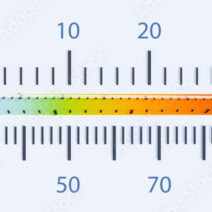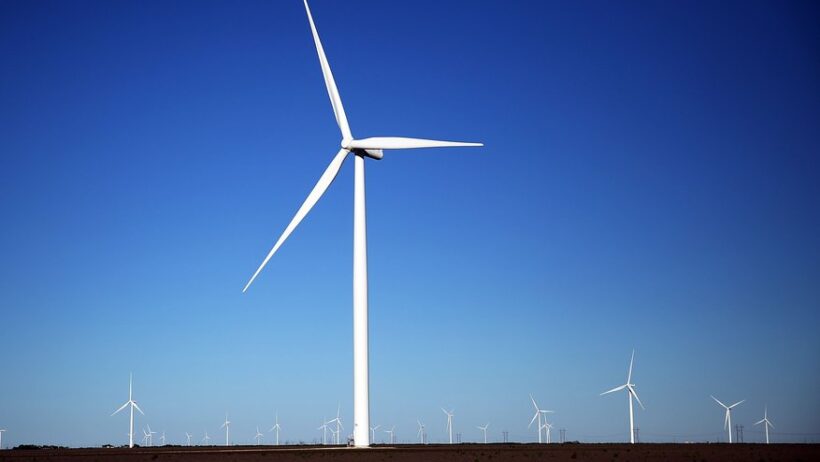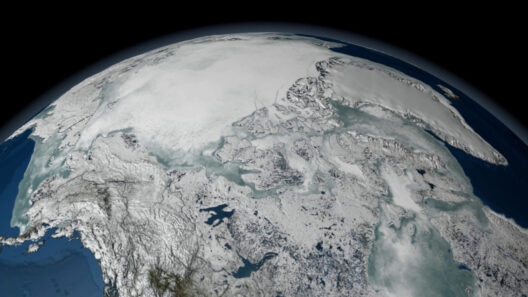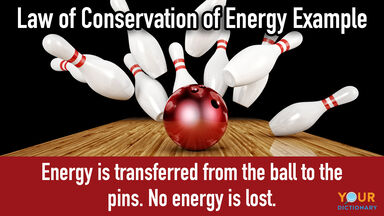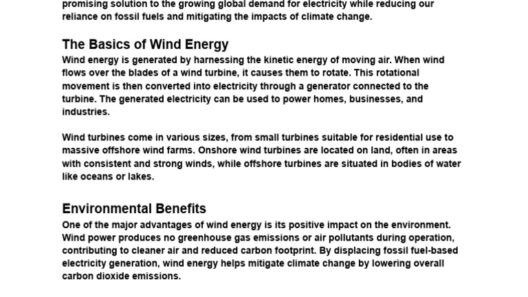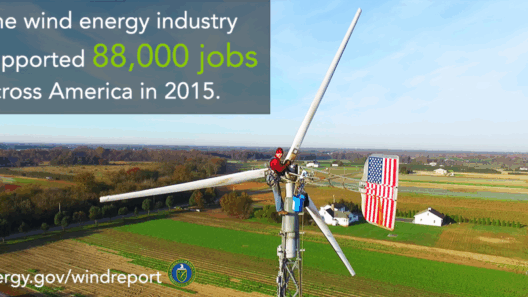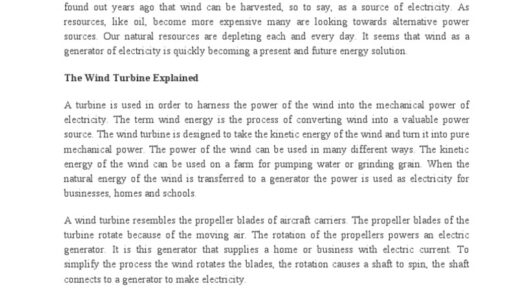In recent years, wind power has surged into the limelight as a sustainable alternative to fossil fuels. With rising energy demands and urgent calls for climate action, the question of how much energy a wind turbine can generate often recalibrates our understanding of renewable sources. Wind turbines are not merely elegant structures punctuating the skyline; they are complex machines that play a critical role in the global energy landscape. Understanding the numbers behind wind power illuminates not just how much energy they generate, but the underlying principles that make them both fascinating and vital.
Wind turbines operate on a straightforward principle: converting kinetic energy from moving air into electrical energy. However, delving deeper into this process reveals layers of physics, engineering, and environmental influence that contribute to efficiency and output. The energy harnessed is contingent upon several factors, including turbine design, wind conditions, and geographical location.
Evaluating the Energy Output
The energy output of a wind turbine is often measured in megawatts (MW), a unit that quantifies electrical power. A modern land-based wind turbine can typically generate anywhere from 1.5 to 3.0 MW of power during optimal conditions. In essence, the larger the turbine’s rotor diameter and the higher its elevation, the greater the volume of wind it can capture.
Moreover, one crucial metric in understanding a wind turbine’s energy generation is its capacity factor. This term refers to the ratio of actual output over a specific period to its potential output if it operated at full capacity the entire time. Typical capacity factors for wind turbines range between 35% to 45%, though some sites with consistently high winds may achieve 50% or more. This variance underscores the importance of location when assessing energy generation capabilities.
Analyzing Capacity and Efficiency
When engineers design wind turbines, numerous technical specifications come into play to augment efficiency. These include rotor size, gear configurations, and generator types. Contemporary turbines often employ advanced technologies, such as variable pitch blades that adjust their angle in response to wind speed, optimizing energy capture.
However, it’s not merely the machinery that dictates energy production. The environmental context — including wind patterns, topography, and climatic conditions — significantly influences how much energy a turbine can feasibly capture. Areas with high wind velocities, like coastal regions and open plains, favor efficacious energy generation. Notably, offshore wind installations can produce even more energy due to stronger and more consistent winds over the seas.
Another fascinating aspect is the concept of wind energy density. As a cubic function of wind speed, even a slight increase in wind speed results in a disproportionately larger increase in the amount of energy harvested. This principle reinforces the necessity of site assessment prior to installation to identify locations with optimal wind speeds.
Projecting Future Energy Production
To gauge how much energy wind turbines might produce in the future, industry forecasts offer intriguing insights. The cumulative global installed wind power capacity is expected to increase significantly, with projections suggesting that worldwide wind power will contribute a substantial share to the overarching energy mix. Researchers indicate that if current trends continue, wind power could potentially supply 20% of global electricity by 2030.
This anticipated trend isn’t merely a matter of expanding infrastructure but also reflects technological advancements that enhance efficiency and capacity. Innovations such as floating wind farms and larger turbines capable of harnessing deeper waters are transforming our expectations of how and where we can capture wind energy.
Environmental Impact: A Sustainable Choice
The energy generated by wind turbines not only has the potential to power homes and businesses but also mitigates the detrimental impacts environmental degradation. Wind power is often heralded as one of the cleanest sources of energy, significantly reducing greenhouse gas emissions relative to fossil fuel consumption. Each megawatt of wind energy produced can displace around 0.9 tons of carbon dioxide annually, demonstrating an unambiguous path toward a cleaner atmosphere.
Furthermore, by harnessing the inexhaustible energy of the wind, we can curtail our reliance on finite resources that contribute to habitat destruction and pollution. This burgeoning technology empowers communities to shift toward self-sufficiency, fostering a renewable energy economy that equitably distributes energy access.
Challenges and Considerations
Conclusion: Toward a Breezy Future
Wind turbines epitomize the embodiment of modern renewable energy, transforming invisible forces into tangible power. The numbers derived from wind generation encapsulate not only the potential to conserve the environment but also the embracing of technological advancements paramount for a sustainable future. By assessing the multifaceted dynamics influencing how much energy a wind turbine generates, we unveil a narrative of resilience in addressing global energy challenges. The fascination surrounding this form of energy generation is not just about numbers; it reflects our collective commitment to safeguarding the planet for generations to come.
